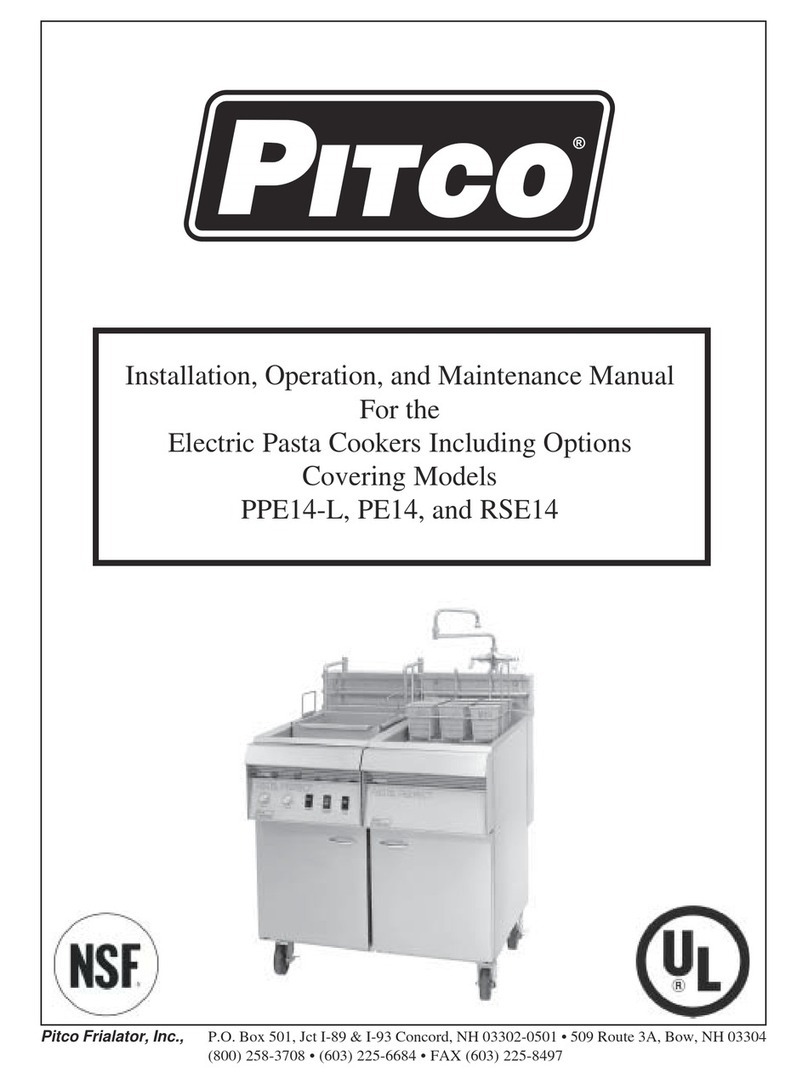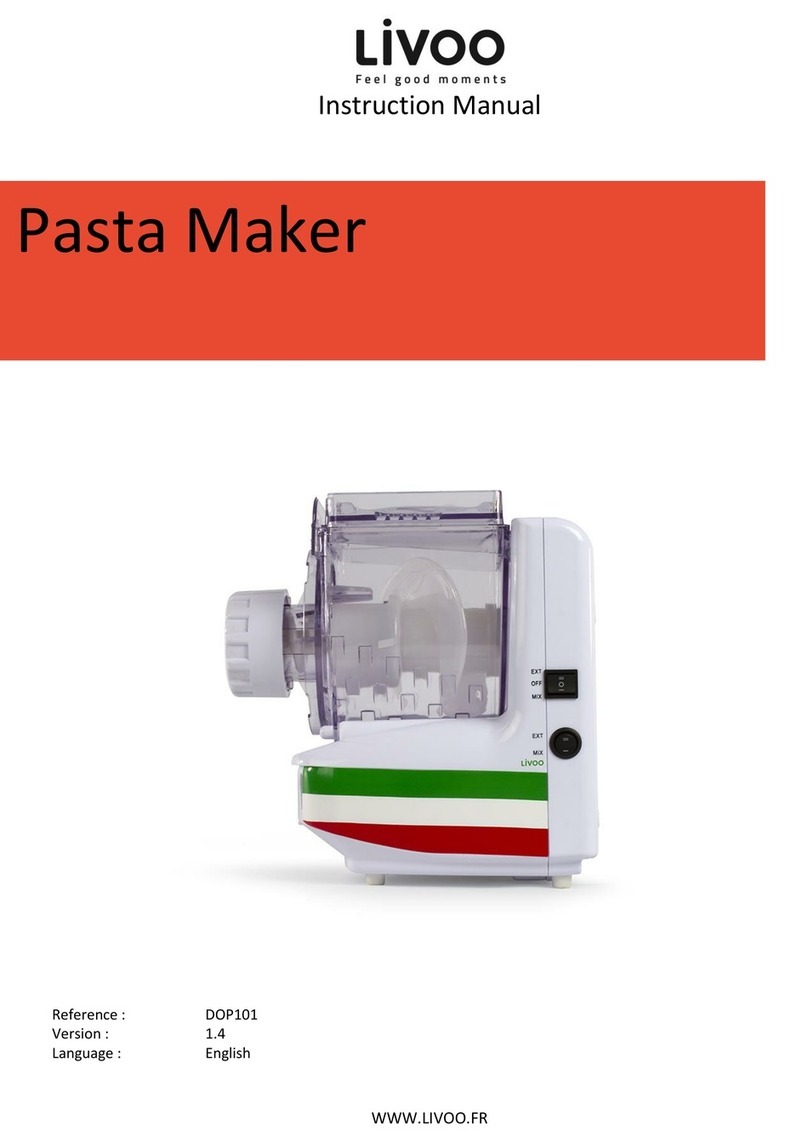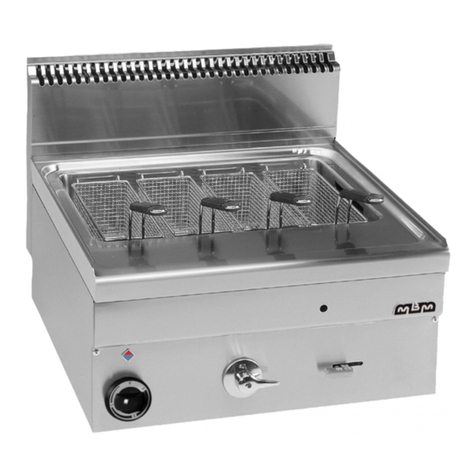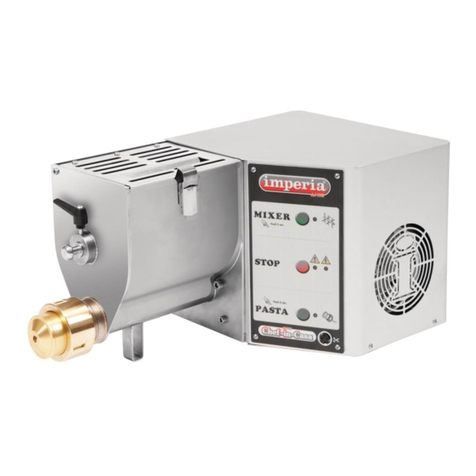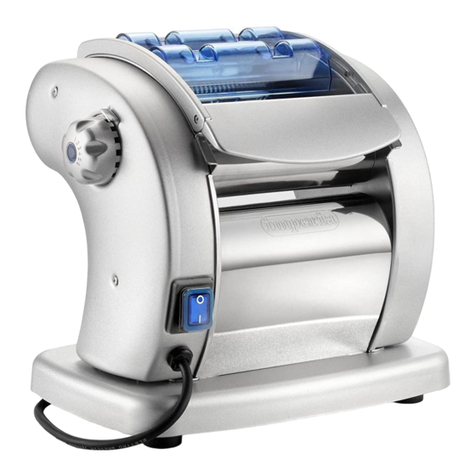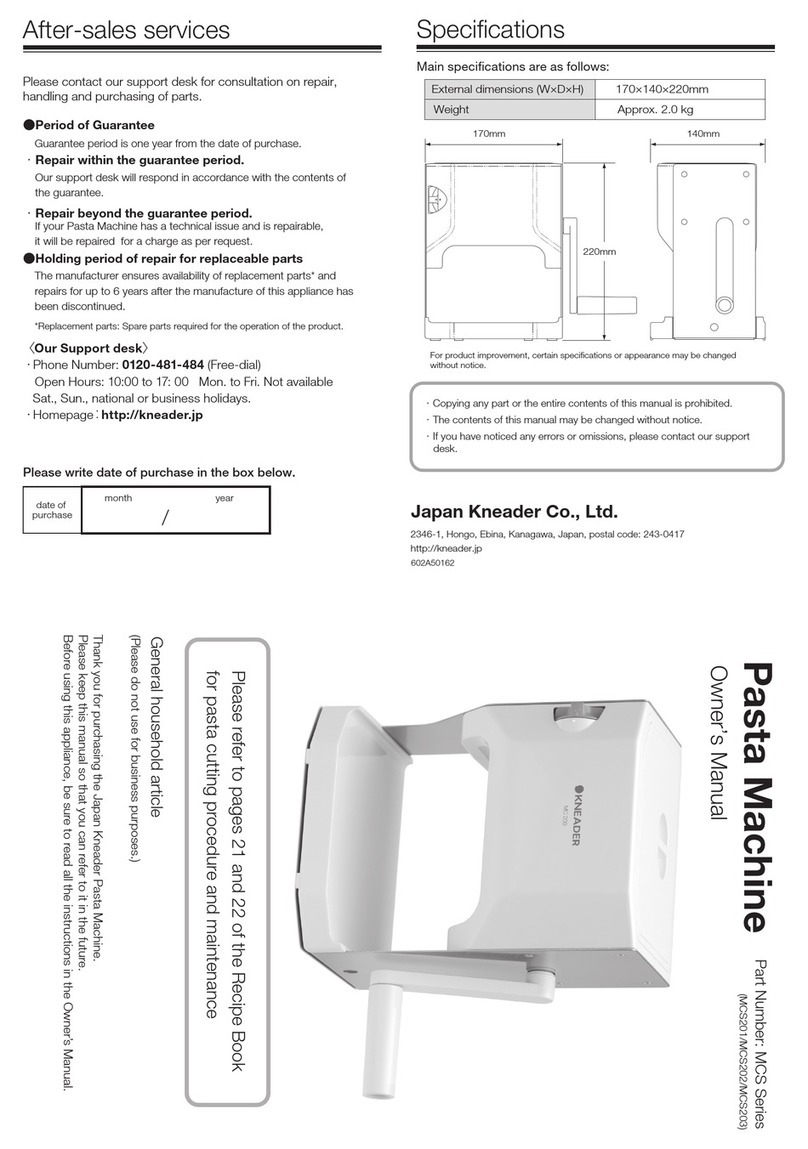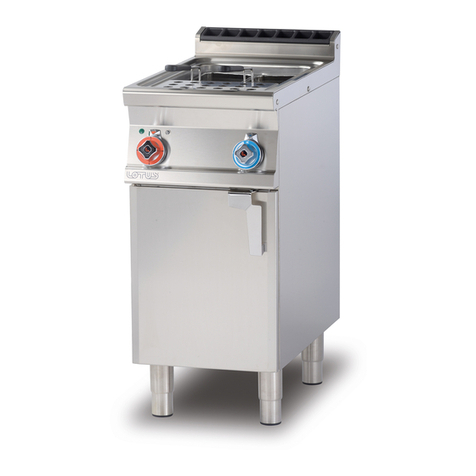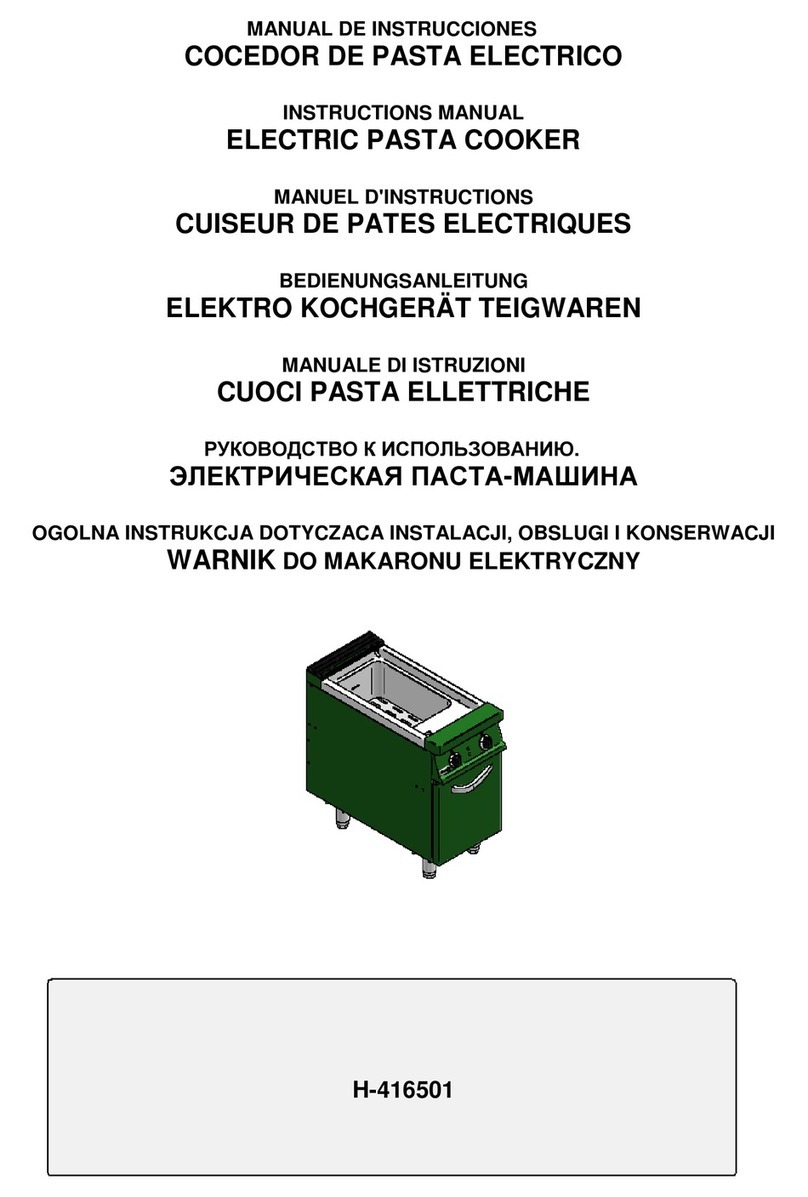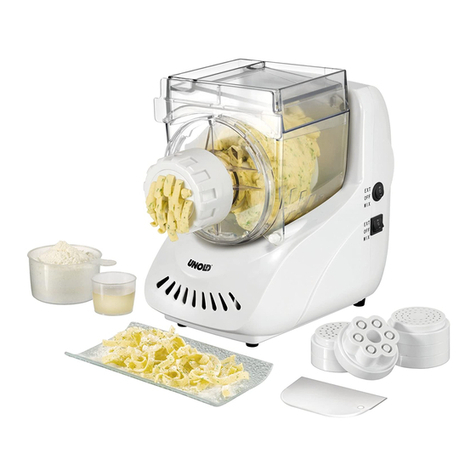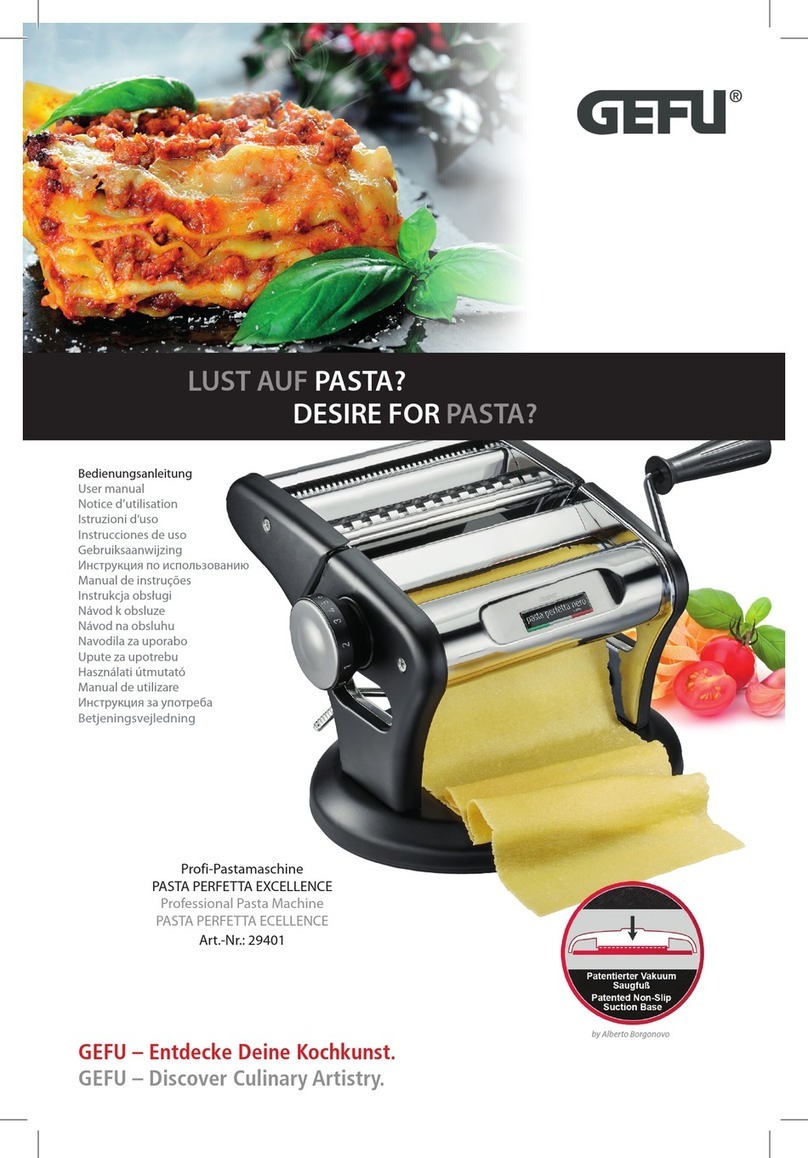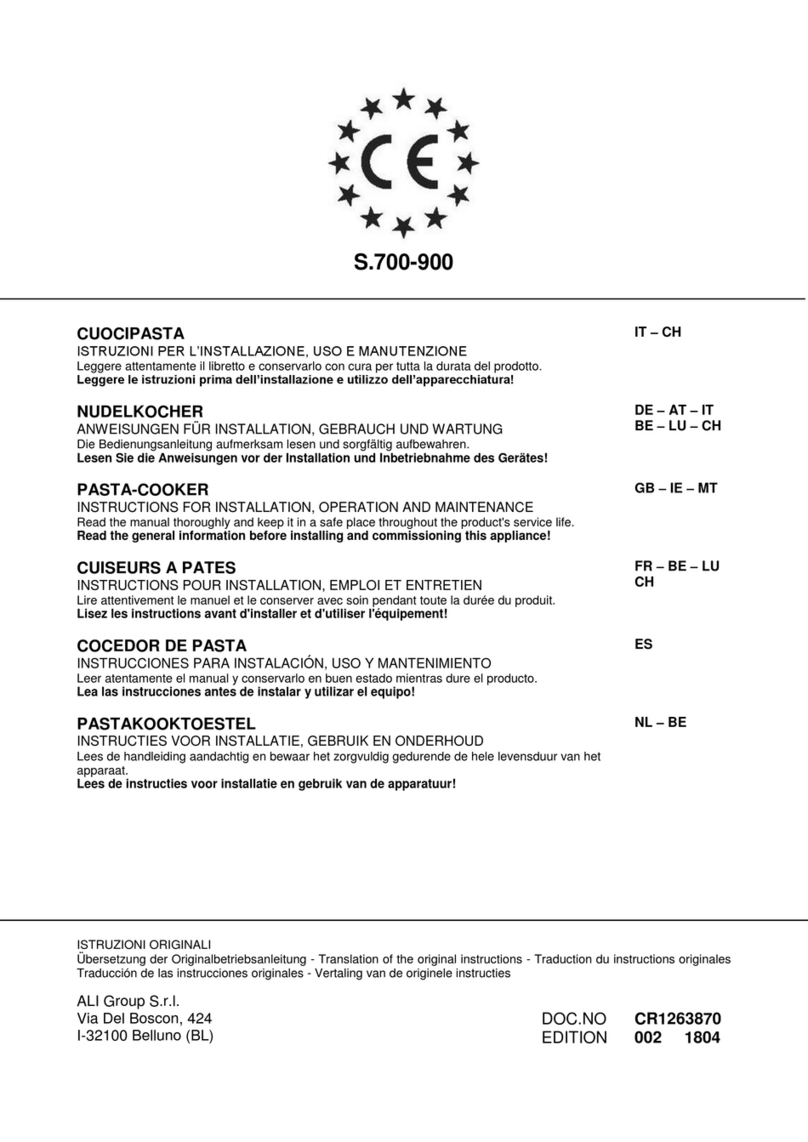2
Ci congratuliamo con voi per l’ottima scelta. Tutte le macchine della linea
TITANIA e i loro accessori sono prodotti sulla base di standard qualitativi molto
elevati e vi garantiranno affidabilità e sicurezza nel tempo.
AVVERTENZE
IL PRESENTE MANUALE È PARTE INTEGRANTE DELLA MACCHINA.
Prima di compiere qualsiasi operazione, leggere attentamente TUTTE le istruzioni
e le norme di sicurezza di seguito riportate. Qualsiasi utilizzo non previsto dal pre-
sente manuale di istruzioni deve considerarsi scorretto o improprio.
ATTENZIONE!
La meccanica delle macchine manuali è stata progettata anche per l’eventuale
inserimento del motoriduttore.
QUALUNQUE ALTRO TIPO DI MOTORIZZAZIONE È DA RITENERSI IMPRO-
PRIO E PERICOLOSO.
Il fabbricante si ritiene sollevato da eventuali responsabilità in caso di:
- uso improprio
- non corretta installazione
- modifiche e interventi non autorizzati dal fabbricante
- utilizzo di ricambi non originali o non specifici per il modello
ATTENZIONE!
QUESTE MACCHINE NON SONO DEI GIOCATTOLI. DURANTE L’USO QUINDI,
TENERLE SEMPRE SOTTO CONTROLLO E FUORI DALLA PORTATA DEI
BAMBINI
IMPIEGO DELLE MACCHINE DELLA LINEA
TITANIA (fig.1)
PRIMA DI OGNI UTILIZZO: seguire le istruzioni descritte nel paragrafo “Pulizia e
manutenzione”.
1) Sistemare la macchina (A) in prossimità del bordo di un piano stabile ed in
grado di sopportarne il peso, inserire il morsetto (B) nel vano sede morsetto (C),
avvitare la vite (D) sino ad ottenere un bloccaggio stabile con il piano d’appog-
gio.
2) Tenendo premuta la leva (H) ruotare in senso antiorario il pomello regolatore (I)
sino ad ottenere la massima luce tra i rulli tirasfoglia (L), inserire la manovella (M)
nel foro d’innesto (N) della sfogliatrice, appoggiare sui rulli tirasfoglia una parte di
impasto precedentemente preparato e ruotare la manovella in senso orario
(facendo girare i rulli tirasfoglia). Si otterrà così una prima formatura della sfoglia,
ripiegare la stessa in due e ripassarla tra i rulli, ripetere l’operazione sino ad otte-
nere una sfoglia omogenea.
3) Per diminuire lo spessore della sfoglia, ruotare in senso orario il pomello rego-
latore (I) in modo da ridurre la distanza tra i rulli tirasfoglia (L).
Passare e ripassare la sfoglia, infarinandola bene ogni volta, fino ad ottenere lo
spessore desiderato.
4) Per un risultato ottimale si consiglia di infarinare la sfoglia su entrambi i lati ad
ogni passaggio tra i rulli tirasfoglia.
5) Per tagliare la sfoglia sfilare la manovella (M) dalla sfogliatrice (A) ed inserire la
stessa nel foro d’innesto (O), appoggiare un’estremità della sfoglia sui rulli
tagliatori (P) e ruotare la manovella in senso orario.


